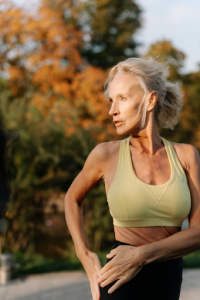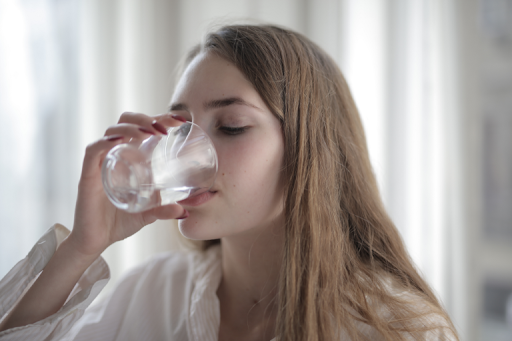 Folic acid is known mostly for helping to prevent birth defects. However, according to women’s health specialist and self-help author Marla Ahlgrimm, it’s crucial for overall health, especially for women of childbearing age.
Folic acid is known mostly for helping to prevent birth defects. However, according to women’s health specialist and self-help author Marla Ahlgrimm, it’s crucial for overall health, especially for women of childbearing age.
Folic acid is a synthetic form of the B Vitamin folate. It is heavily involved in the production of red blood cells and the development of other cells throughout the body. Marla Ahlgrimm explains that folic acid supports DNA synthesis and repair and offers a host of other benefits for women.
Folic Acid And Birth Defect Prevention
While there are no guarantees that a pregnancy will go without concerns, women who take folic acid supplements throughout their pregnancy may be at a lower risk of experiencing certain birth defects. Marla Ahlgrimm says that folic acid is known to reduce the risk of neural tube defects, including anencephaly and spina bifida. Folic acid may also help prevent cleft lip, cleft palate, and other facial deformities.
Overall Health
According to Marla Ahlgrimm, folic acid assists in the production of red blood cells. This can reduce the potential for anemia, which is characterized by a low number of healthy blood cells. Folic acid is also beneficial in helping DNA repair and synthesize. Further, folic acid helps with cell function and rapid cell growth during pregnancy and in early childhood. Marla Ahlgrimm notes that ultimately, folic acid can work to reduce the risk of chronic diseases and birth defects.
Sources Of Folic Acid
There are many different ways that women can get enough folic acid, especially during pregnancy. While Marla Ahlgrimm explains that supplements are beneficial, eating a healthy diet is the best way to get enough vitamins and minerals.
Marla Ahlgrimm cites leafy green vegetables, such as broccoli, kale, and spinach, as excellent sources of folate. These foods don’t have to be eaten in their raw form, and they can be cooked or blended into smoothies for those who don’t appreciate the earthy taste of cruciferous vegetables. Legumes, such as chickpeas, lentils, and kidney beans, are also rich in folate. For those who prefer a sweeter option, many citrus fruits, like lemons and grapefruits, also contain high levels of the B vitamin. Marla Ahlgrimm explains that some cereals, breads, and grains are also fortified with folic acid.
Important Considerations
 The key take away here is that women of all ages can benefit from an increased consumption of folic acid. However, Marla Ahlgrimm says that it’s important that women of childbearing age consult with their primary health care physicians to ensure that they get enough of the vitamin to help prevent birth defects and neural tube deficiencies during pregnancy. Folic acid can be obtained either by dietary supplement or through eating a healthy diet that includes leafy greens and certain legumes.
The key take away here is that women of all ages can benefit from an increased consumption of folic acid. However, Marla Ahlgrimm says that it’s important that women of childbearing age consult with their primary health care physicians to ensure that they get enough of the vitamin to help prevent birth defects and neural tube deficiencies during pregnancy. Folic acid can be obtained either by dietary supplement or through eating a healthy diet that includes leafy greens and certain legumes.
Marla Ahlgrimm recommends consulting with a healthcare provider to determine the appropriate amount of folic acid to consume, especially for women with underlying health conditions or who are currently taking over-the-counter or prescription medications.








 Women are often told that the reason for their back pain is caused by anything from lack of exercise to picking up children the wrong way. According to
Women are often told that the reason for their back pain is caused by anything from lack of exercise to picking up children the wrong way. According to  The first is to begin wearing a supportive bra. Marla Ahlgrimm says the bra should fit properly to provide adequate support based on breast size. She recommends visiting a shop that specializes in fitting women based on cup size and other factors. Marla Ahlgrimm also recommends practicing good posture throughout the day. This should include keeping your shoulders relaxed and your back straight.
The first is to begin wearing a supportive bra. Marla Ahlgrimm says the bra should fit properly to provide adequate support based on breast size. She recommends visiting a shop that specializes in fitting women based on cup size and other factors. Marla Ahlgrimm also recommends practicing good posture throughout the day. This should include keeping your shoulders relaxed and your back straight.
 Many health practitioners recommend drinking nothing other than water and the occasional cup of coffee or a glass of wine. Marla Ahlgrimm doesn’t necessarily disagree but also notes that some individuals may benefit from a slight variety. Athletes or those who live in extremely hot and humid climates may also need to enrich their diet with electrolytes. While these minerals are found in bananas, sweet potatoes, and other foods, many commercial sports drinks are quick, easy, and relatively safe sources that can help you replenish lost nutrients quickly.
Many health practitioners recommend drinking nothing other than water and the occasional cup of coffee or a glass of wine. Marla Ahlgrimm doesn’t necessarily disagree but also notes that some individuals may benefit from a slight variety. Athletes or those who live in extremely hot and humid climates may also need to enrich their diet with electrolytes. While these minerals are found in bananas, sweet potatoes, and other foods, many commercial sports drinks are quick, easy, and relatively safe sources that can help you replenish lost nutrients quickly.

 The old adage “you are what you eat” rings true, according to Marla Ahlgrimm. While it doesn’t mean you’ll literally turn into a carrot or sponge cake, the nutrients you consume strengthen the building blocks of your health.
The old adage “you are what you eat” rings true, according to Marla Ahlgrimm. While it doesn’t mean you’ll literally turn into a carrot or sponge cake, the nutrients you consume strengthen the building blocks of your health.
 There are many ways to lower your healthcare costs, from keeping yourself in better shape to reducing your insurance deductible. But these aren’t always options for everyone, says
There are many ways to lower your healthcare costs, from keeping yourself in better shape to reducing your insurance deductible. But these aren’t always options for everyone, says 





 Marla Ahlgrimm has co-authored two ground-breaking books,
Marla Ahlgrimm has co-authored two ground-breaking books,